Introduction
This document describes how to troubleshoot common problems with Open Shortest Path First (OSPF).
Prerequisites
Requirements
There are no specific requirements for this document.
Components Used
This document is not restricted to specific software and hardware versions.
The information in this document was created from the devices in a specific lab environment. All of the devices used in this document started with a cleared (default) configuration. If your network is live, ensure that you understand the potential impact of any command.
Conventions
Refer to Cisco Technical Tips Conventions for more information on document conventions.
Main Flowchart
If you have the output of a show ip ospf neighbor, show ip ospf neighbor, or show tech-support command from your Cisco device, you can use the Cisco CLI Analyzer to display potential issues and fixes. To use Cisco CLI Analyzer, you must have JavaScript enabled.
Note: Only registered Cisco users have access to internal Cisco tools and information.
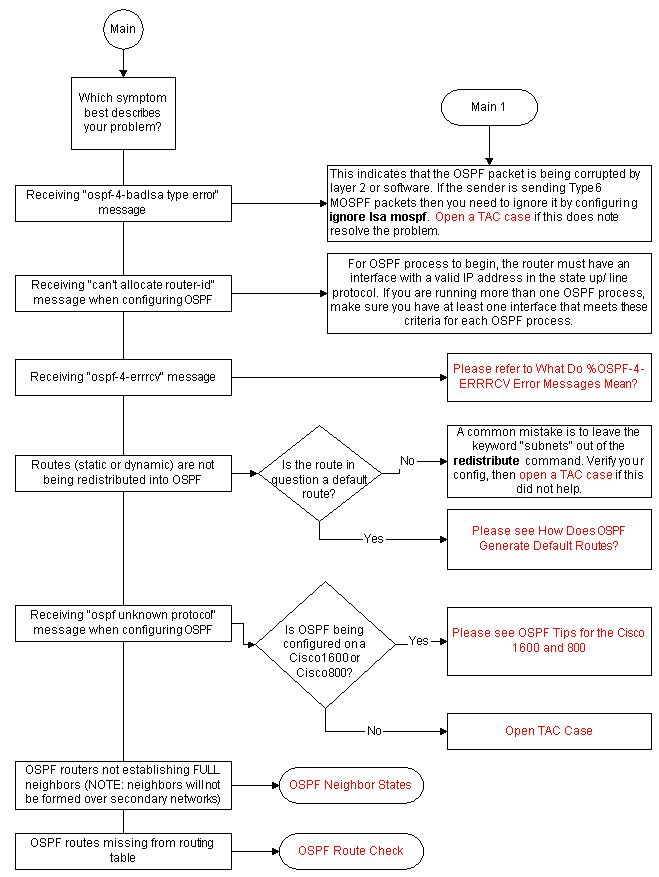
Troubleshoot OSPF Neighbor States
Refer to OSPF Neighbor States for neighbor state descriptions.
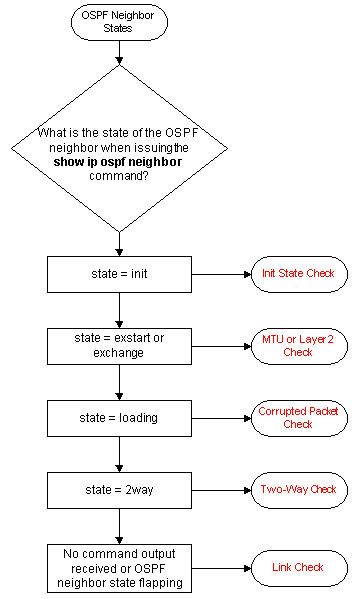
Troubleshoot the OSPF Routing Table
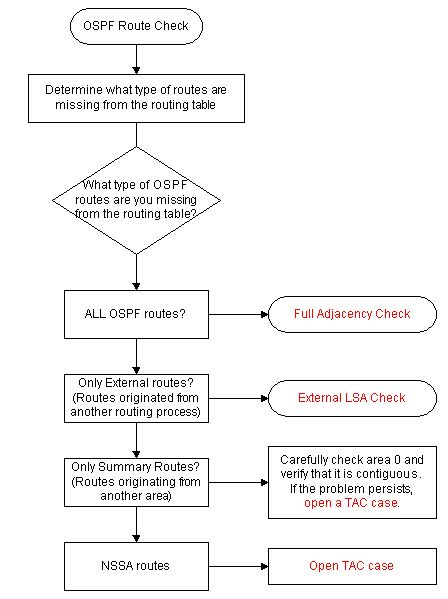
Troubleshoot OSPF Init State
Refer to Troubleshoot OSPF Neighbor Problems for more information on the OSPF Init State.
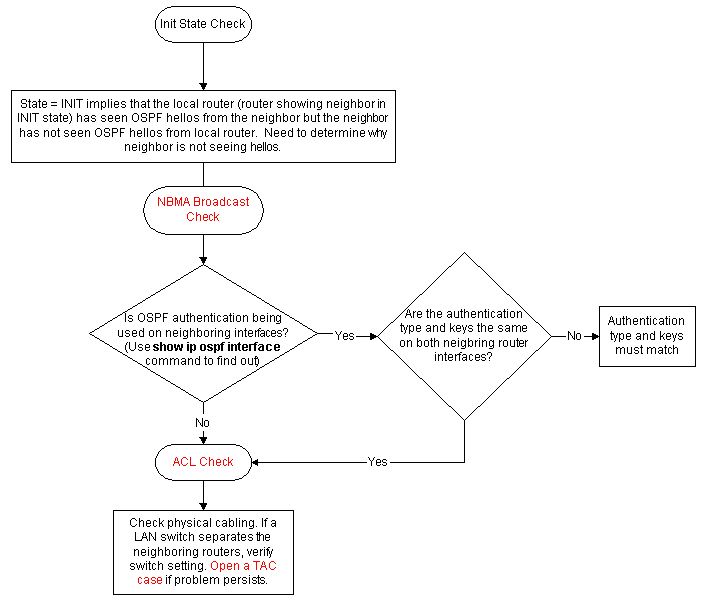
Troubleshoot OSPF MTU
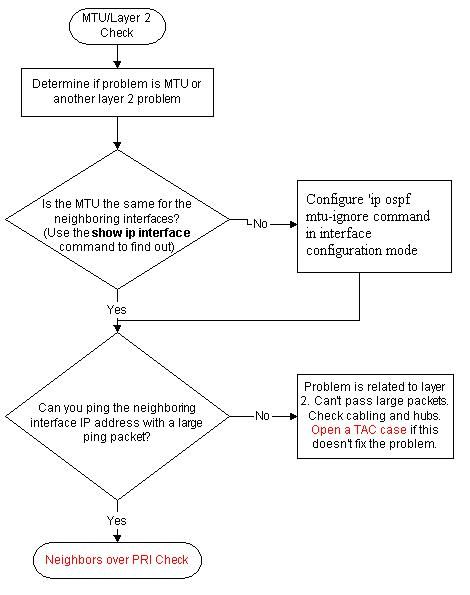
Note: If the problem is related to Layer 2, check if a proxy ARP is enabled. If it is enabled, disable it, and use the clear ip arp command in order to clear the ARP cache.
Troubleshoot OSPF Corrupt Packets
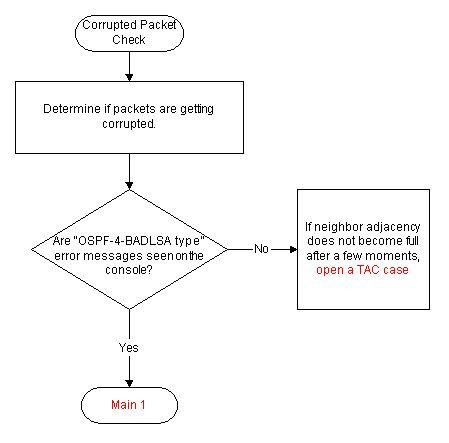
Troubleshoot OSPF Two-Way State
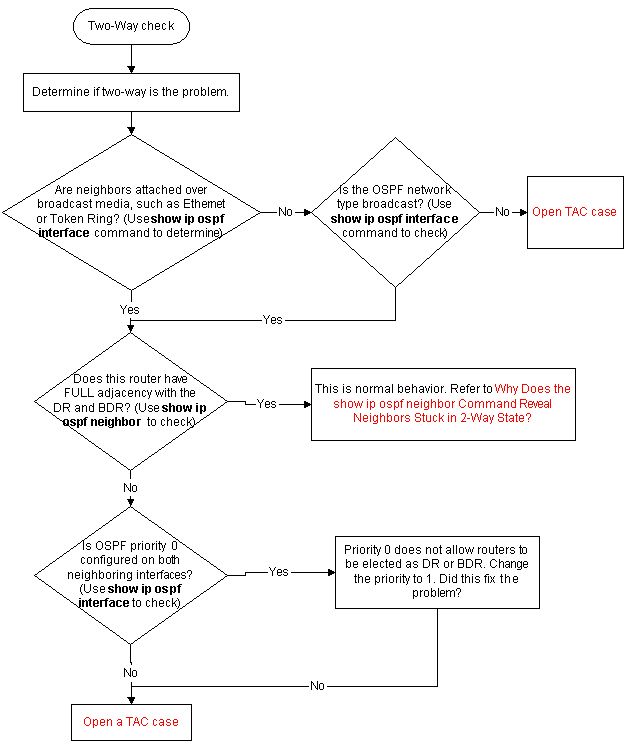
Troubleshoot OSPF Links
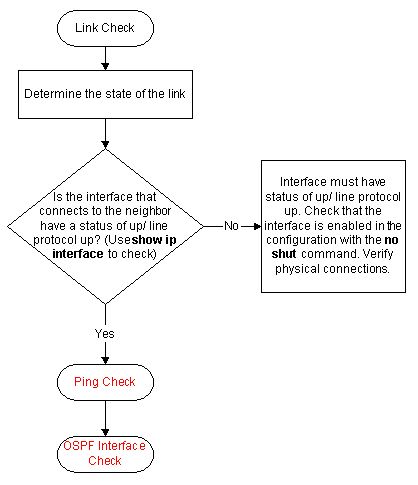
You can use an Embedded Event Manager (EEM) script to troubleshoot the links flapping.
For more information, refer to this Cisco Support Community document that describes how to use an EEM script in order to collect information from a router when there is an OSPF flap: Troubleshoot OSPF Flaps with EEM Script.
.
Troubleshoot Full Adjacency
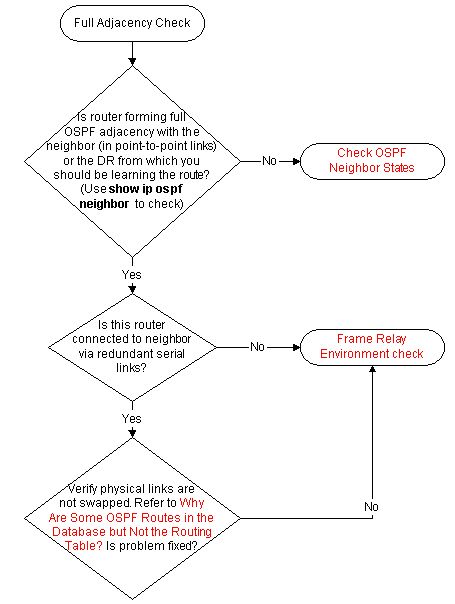
Troubleshoot External Link-State Advertisements
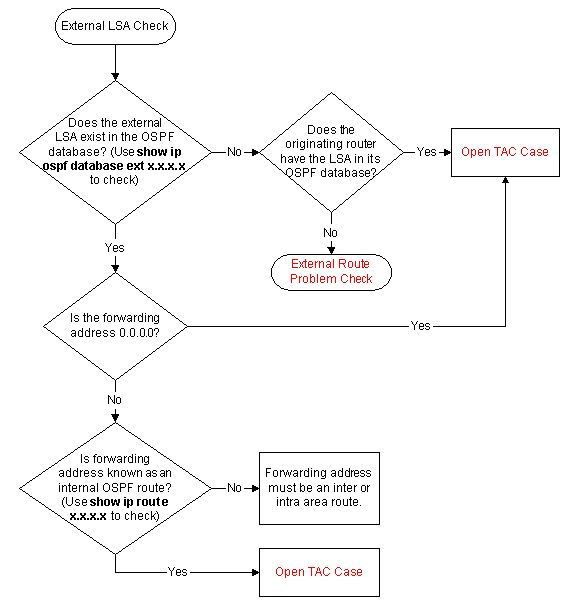
Troubleshoot OSPF NBMA Networks
Refer to Troubleshoot Open Shortest Path First Route Database Issues for more information on this topic.
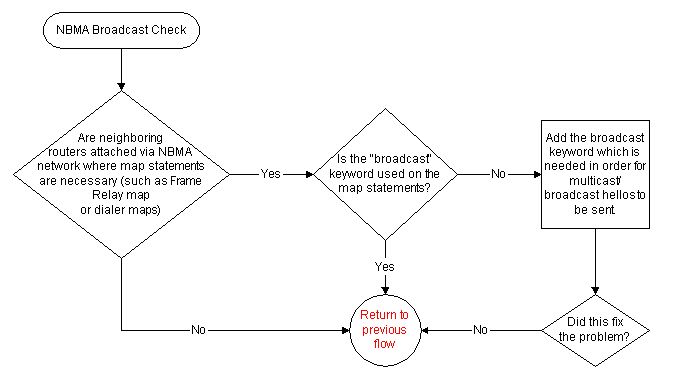
Troubleshoot Access Lists
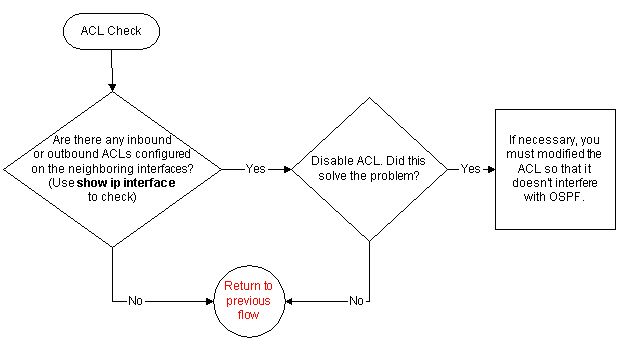
Troubleshoot Neighbors over PRI
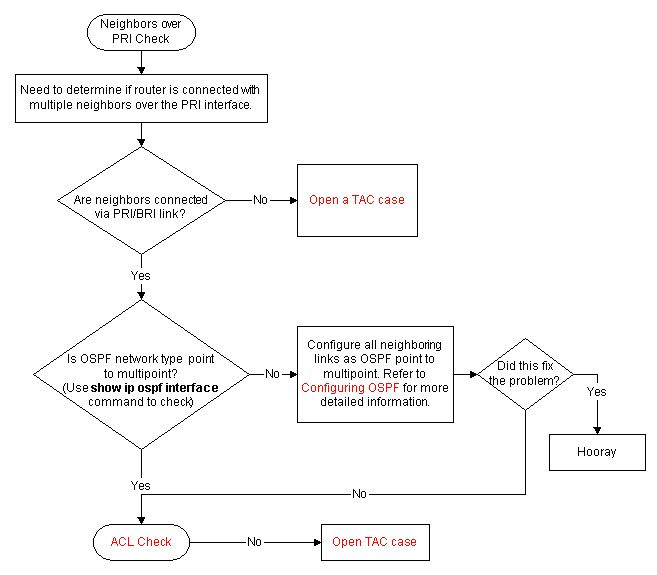
Troubleshoot Ping
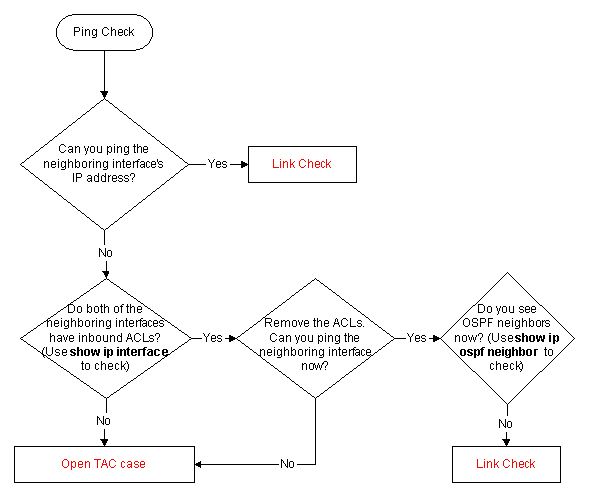
Troubleshoot the OSPF Interface
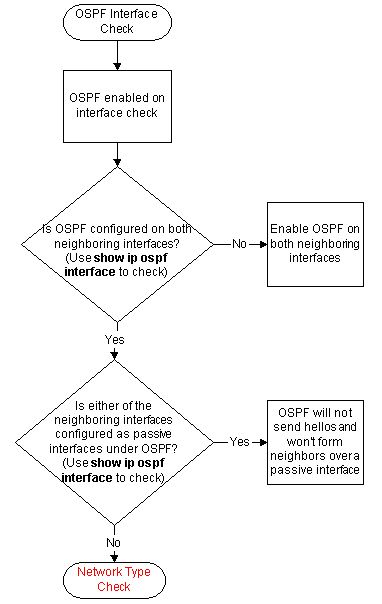
Troubleshoot Frame Relay Environment
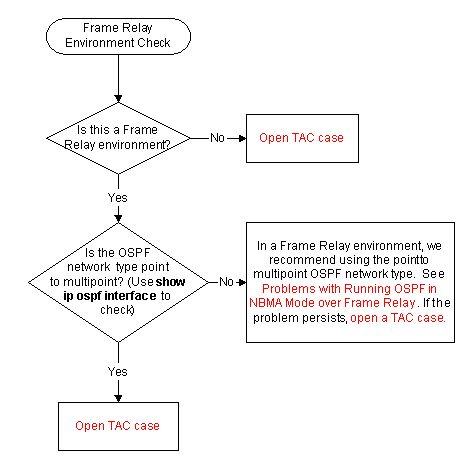
Troubleshoot External Route Problems
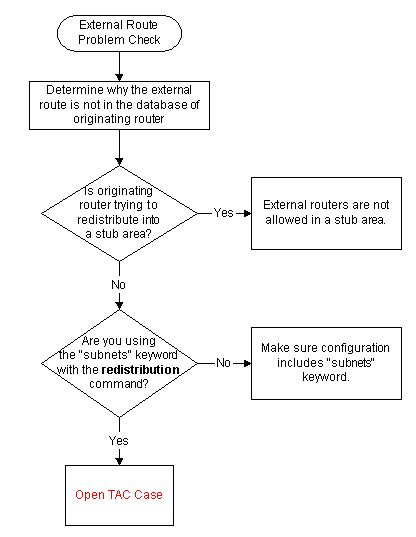
Troubleshoot Network Type
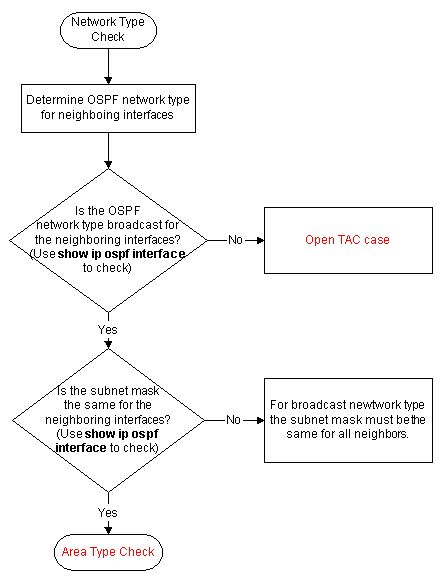
Troubleshoot OSPF Area Type
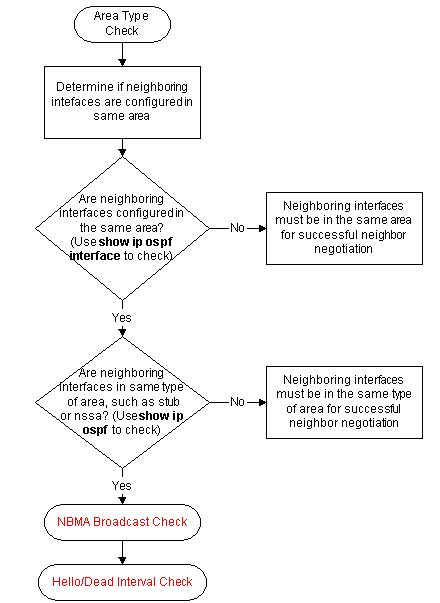
Troubleshoot the Hello/Dead Interval Mismatch
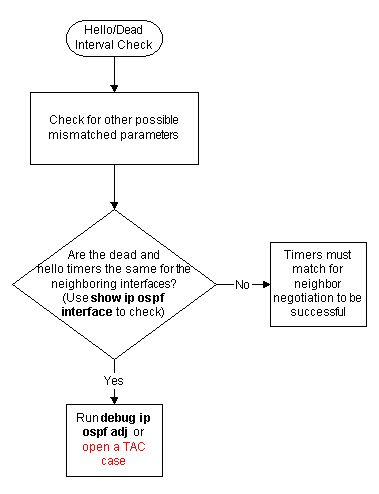
The debug output from the debug ip ospf hello command shows the mismatch in hello parameters. Here is an example of the debug output:
*Oct 12 14:03:32.595: OSPF: Send hello to 10.224.0.5 area 0 on FastEthernet1/0
from 192.168.12.2
*Oct 12 14:03:33.227: OSPF: Rcv hello from 10.1.1.1 area 0 from FastEthernet1/0
192.168.12.1
*Oct 12 14:03:33.227: OSPF: Mismatched hello parameters from 192.168.12.1
!--- Indicates that there is mismtached hello parameters from 192.168.12.1
*Oct 12 14:03:33.231: OSPF: Dead R 2 C 3, Hello R 1 C 1 Mask R
255.255.255.0 C 255.255.255.0
*Oct 12 14:03:33.531: OSPF: Send hello to 10.224.0.5 area 0 on
FastEthernet1/0 from 192.168.12.2
Related Information




















 Feedback
Feedback